Keeping calm is key to the well-being of those living with dementia
Bradford Royal Infirmary (BRI) was the first acute hospital to get official recognition for its work in improving the environment and the care it offers patients living with dementia.
Key to this hospital winning a Building Better Healthcare (BBH) award in 2012 for best interior design project was the complete refurbishment of two wards that has made a great difference to the care and well-being of those living with dementia when they are in hospital. And the hospital continues to innovate.
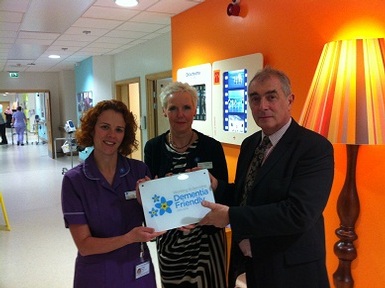
As BRI’s lead dementia nurse, Danielle Woods, puts it: “The environment is extremely important to a person living with dementia – a calm atmosphere and soothing décor can help them maintain their independence, whereas an unsuitable environment can escalate agitation and so on.”
Not surprisingly, the organising principle behind BRI’s refurbishment has therefore been a number of innovative solutions to transform the wards into calm, uncluttered places.
Examples include different colours to aid orientation, cinema seating so patients can sit and enjoy films from film archives, plus artwork and photographs of local views of Bradford on the walls that can be easily changed to provide variety. Dementia-friendly signs have also been created by nearby Leeds-based company, Find.
“Lighting has also paid a vital role in the wards – with intelligent lighting used to both lift patients’ moods and calm them down, as well as helping to balance their circadian rhythms,” says Ms Woods. “Our lighting also avoids casting a shadow – as this can be interpreted a frightening ‘ hole’ or void by a person living with dementia if they have problems with their vision.
“One innovation that we thought would be useful, but hasn’t been so helpful, are the memory boxes, containing personal reminiscences of the patient. Unfortunately, placed as they are above people’s beds they haven’t been much used, except as a prompt to help the patient find the right bed."
Since winning the BBH award, funding of more than £500,000 has been secured from the Prime Minister’s Dementia Challenge and the money has been used to refurbish two major corridors at St Luke’s – a sister hospital to Bradford Royal Infirmary – using the same innovative techniques of the earlier ward refurbishment.
Ms Woods says: “With all our refurbishment the principle is the same – we would like any people living with dementia who are in our care to feel as comfortable and relaxed as possible. And those who are able to, can find their way easily using our signage and colour coding.
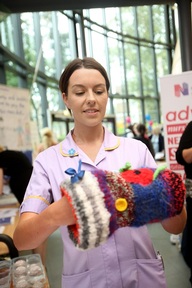
“At the core of our care lies the belief that people living with dementia are all individuals and we must work around them rather than them having to fit in around us.
“With the reductions in things such as day rooms these days, it’s all about being creative and imaginative. For example we have about 20 My Life, TV units which have music and TV clips and a unit can be wheeled from bed to bed and used one-to-one or in small groups.”
One relatively new innovation that Ms Woods speaks very highly of is the Twiddlemuff, a knitted hand muff with interesting bits and bobs (such as strands of textured ribbons, beads and various fabrics) attached inside and out. They have been designed and developed to provide simple stimulation for active hands, while promoting increased flexibility and brain stimulation.
“A Twiddlemuff engages the person living with dementia, preventing them from tearing out cannulas or repeatedly twisting their clothes and bed clothes,” says Ms Woods.
Latest Innovative Care News
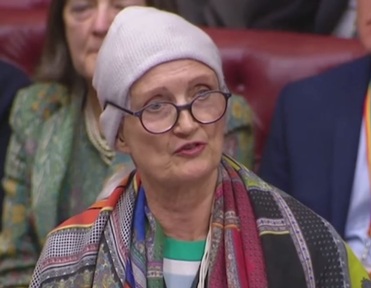 13-May-19
'Pink drink' brain cancer treatment rolled out across NHS in memory of Baroness Jowell
13-May-19
'Pink drink' brain cancer treatment rolled out across NHS in memory of Baroness Jowell
 25-Apr-19
Louis Tomlinson helps 83-year-old who lost wife to dementia complete bucket list
25-Apr-19
Louis Tomlinson helps 83-year-old who lost wife to dementia complete bucket list
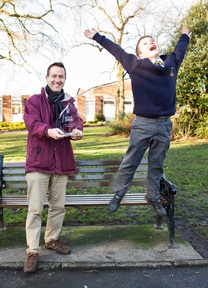 05-Mar-19
Care worker of the year inspires nine-year-old son to work in care
05-Mar-19
Care worker of the year inspires nine-year-old son to work in care
 12-Feb-19
Michael McIntyre's jokes tested to see if they stop elderly catching flu
12-Feb-19
Michael McIntyre's jokes tested to see if they stop elderly catching flu
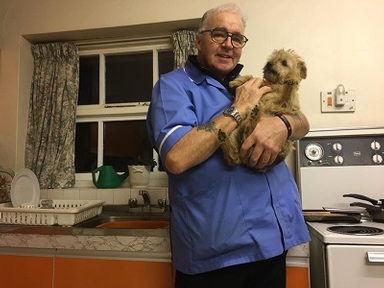 25-Jan-19
Ninety-year-old and his dog can stay together, thanks to care worker
25-Jan-19
Ninety-year-old and his dog can stay together, thanks to care worker